Have you ever looked out the window and wondered if it’s a bluetit or greenfinch tweeting on the branch outside? Or what birds are paying your bird feeder a visit every day? A new book, Birds of Ireland: A Field Guide (2nd edition), is the handy pocketbook that you’ll want at your fingertips in order to answer these questions.
Written by Jim Wilson, with photography by Mark Carmody, this second edition of the guide is an up-to-date compendium of the bird population in Ireland. Carefully collated and captured over the past few years, the pair felt it was time to update their first guide as there have been significant changes in the 11 years since it was first published.
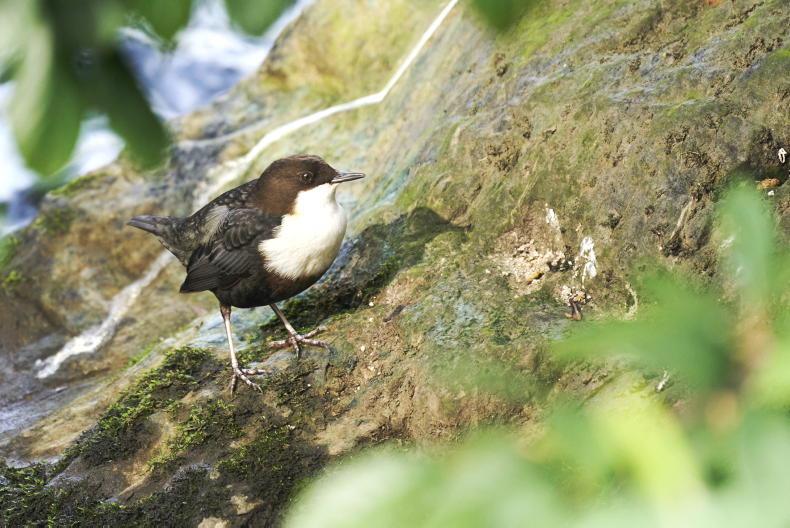
White-throated dipper.
Background and beginnings
Jim and Mark have been working together for a long time. In fact, they are uncle and newphew. Jim was the one who took Mark birdwatching when he was a child. “He’s the reason I started birdwatching,” Mark says. “I travelled all over Ireland birdwatching with him when I was a kid and he instilled my love for it at an early age.”
“It was very easy to work together on the book. I’ve always seen him as a mentor. When I started getting into wildlife photography, he was my first port of call, to ask him to critique my work and look for advice. He would always give me a good steer.”
Jim’s passion has been engrained from a young age also. Growing up near Cork Harbour, he would go birdwatching with friends from school. “As long as I can remember, I have had a fascination with wild animals and nature of all description,” says Jim.
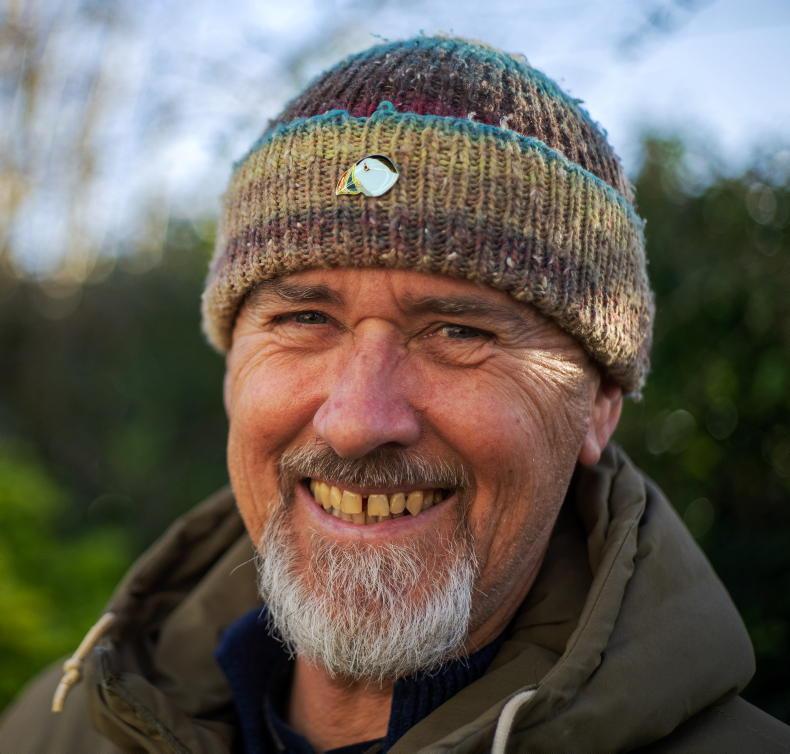
Jim Wilson
“When I was a child, I used to get library books on the natural world, the ones with big pictures of wildlife from Africa and all that. I was struck by the wonder of the variety of life that we share the planet with. Then when I was about 11 years old, I went birdwatching with some friends of mine in school. This was the first kind of formalised activity that I undertook, which has led to a lifelong passion. My earliest birdwatching notebook, which I still have, is from when I was 12.”
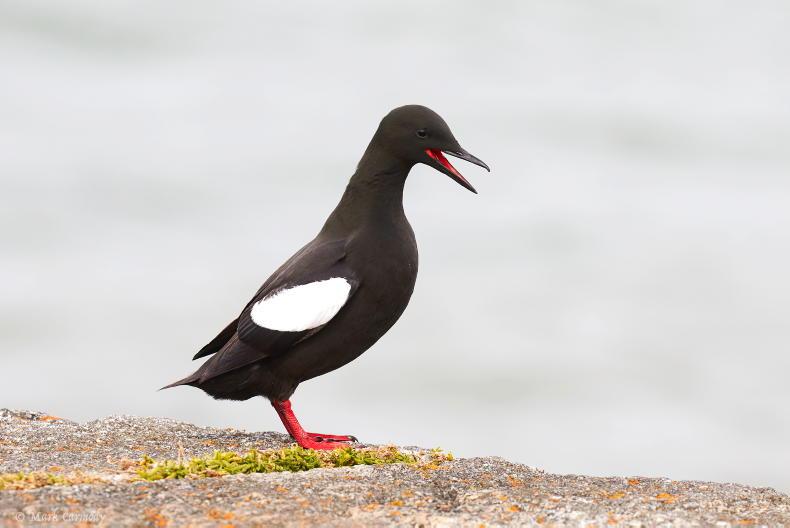
Black Guillemot
Irish wildlife
A lot has happened in Ireland’s natural world in the years since Jim and Mark first published the guide. Things have changed in the landscape and there have been other factors that made the pair want to update the book.
“One of the big things in the past decade that has affected Ireland’s bird population is climate change,” says Jim. “It has caused quite a rapid influx of species from more southern parts of Europe. When we published the first book, these would have been very rare or not breeding at all. There’s a number of those species that are looking like they’re here to stay in fact. For example, the little egret, which is a beautiful, small white heron. I remember I saw my first one in 1976, near my home here in Cork Harbour. It was so rare. Now, they’re in almost every county in Ireland and they’re breeding here. There are also birds like the Goldfinch which have become so common in gardens. It’s unbelievable.”
“On the other hand, there are others like garden birds, and greenfinches for example, which used be very common, they have now become quite scarce. This is partly due to the spread of a respiratory disease that they get from a birdfeeder in somebody’s garden. So inadvertently, we were actually helping to spread a fatal disease. Their numbers have dropped dramatically. They’re just some of the changes I have seen.”
Creating memories
Birdwatching is a great hobby to undertake as you are not only getting out in nature, but it requires you to be present and in the moment. Turning your phone off, or on silent, observing the natural world around you, and hopefully, capturing some of Ireland’s incredible bird population can be very relaxing.
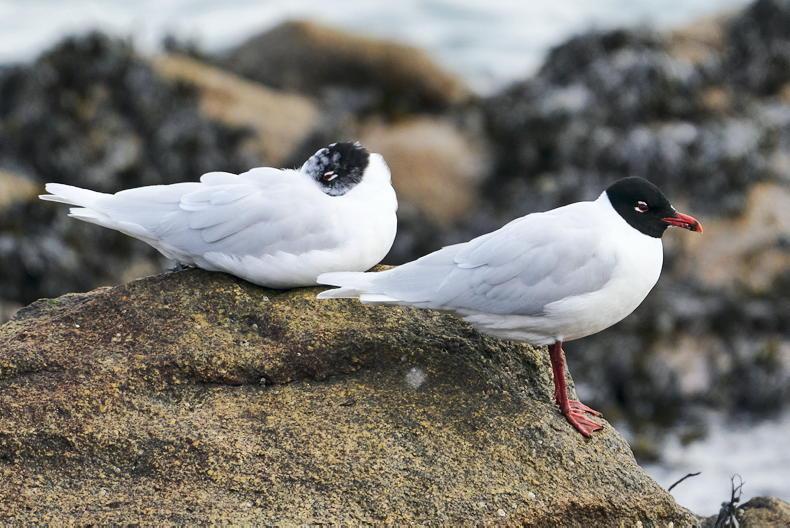
Mediterranean Gull
Jim and Mark have years of experience in this activity and both have wonderful memories of capturing all of the information and photography needed to compile their new book.
“Growing up in Cobh, the sea was always important to me, as well as estuaries and their role. Birdwatching as a child was waders and shorebirds, the curlew, for example,” says Mark. “I do love photographing waders, particularly the young waders. They might have been born in the high arctic of Canada, Scandinavia, or Iceland, and they come down to Ireland in the autumn while migrating south. You could be the first human they’ve ever laid eyes on. They’ve no idea what you are, so if you sit still and get as comfortable as you can, they’ll come right up to your feet. They’re really beautiful birds.”
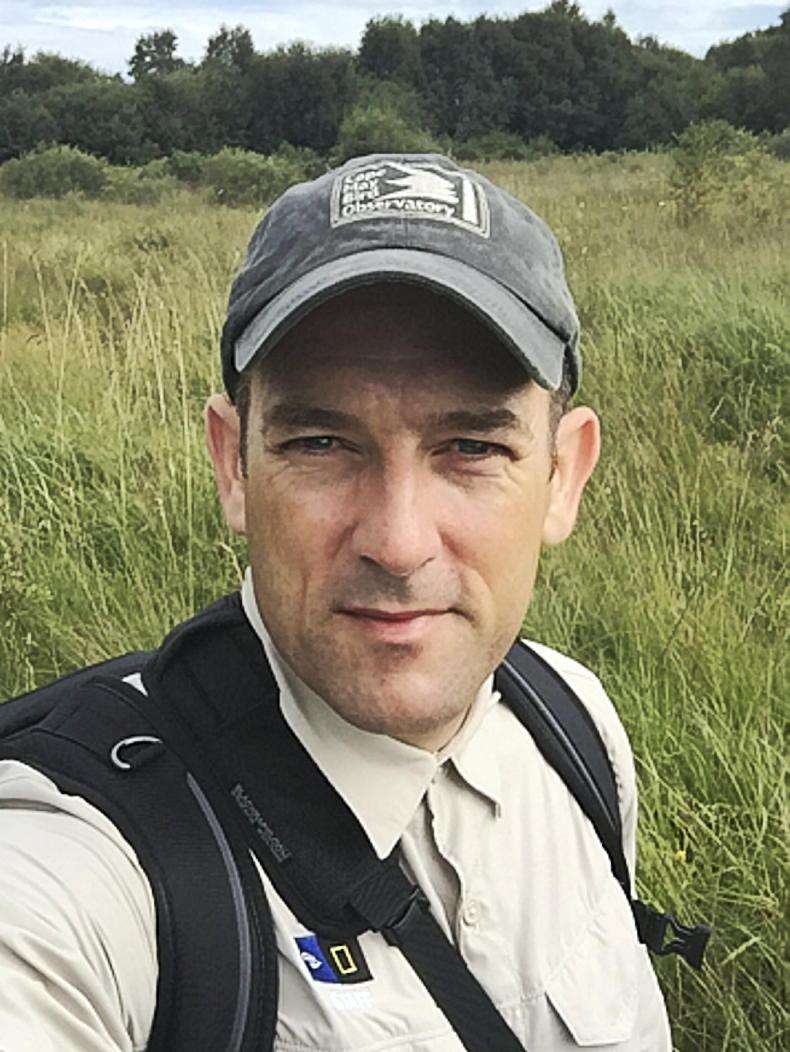
Mark Carmody
For Jim, birdwatching never gets old and it is that simple act that still gives him the passion that was instilled in him as a child. “I’m always asked: ‘what’s your favourite bird?’ and, to be honest, there really isn’t just one. It is whatever bird is in front of me,” he says.
“If it’s a robin, then I’m blown away by the beauty, the structure, the character of the bird. And I do like wetland birds a lot because I grew up on the middle of a big wetland. Honestly, I don’t think there’s any bird I don’t like.”
Jim Wilson is a wildlife writer, broadcaster, tour leader, and former chairman of BirdWatch Ireland. He has been involved in the study and conservation of birds in Ireland for over 45 years, contributing to major surveys and international projects. Mark Carmody has a PhD in biochemistry and works as a European Patent Attorney; Mark is also an award-winning wildlife photographer and former editor of the Cork Bird Report. Together they have co-authored Shorebirds of Ireland (2009), Freshwater Birds of Ireland (2011) and, of course, the first edition of Birds of Ireland (2013).
Just in time for the spring migration back to Ireland and the popular national dawn chorus, the new edition contains details more than 260 species accompanied by over 1,600 photos. The key identification features of each bird are shown in detail. It also features concise descriptions and pointers that will help you identify birds in an easy, quick-reference format.
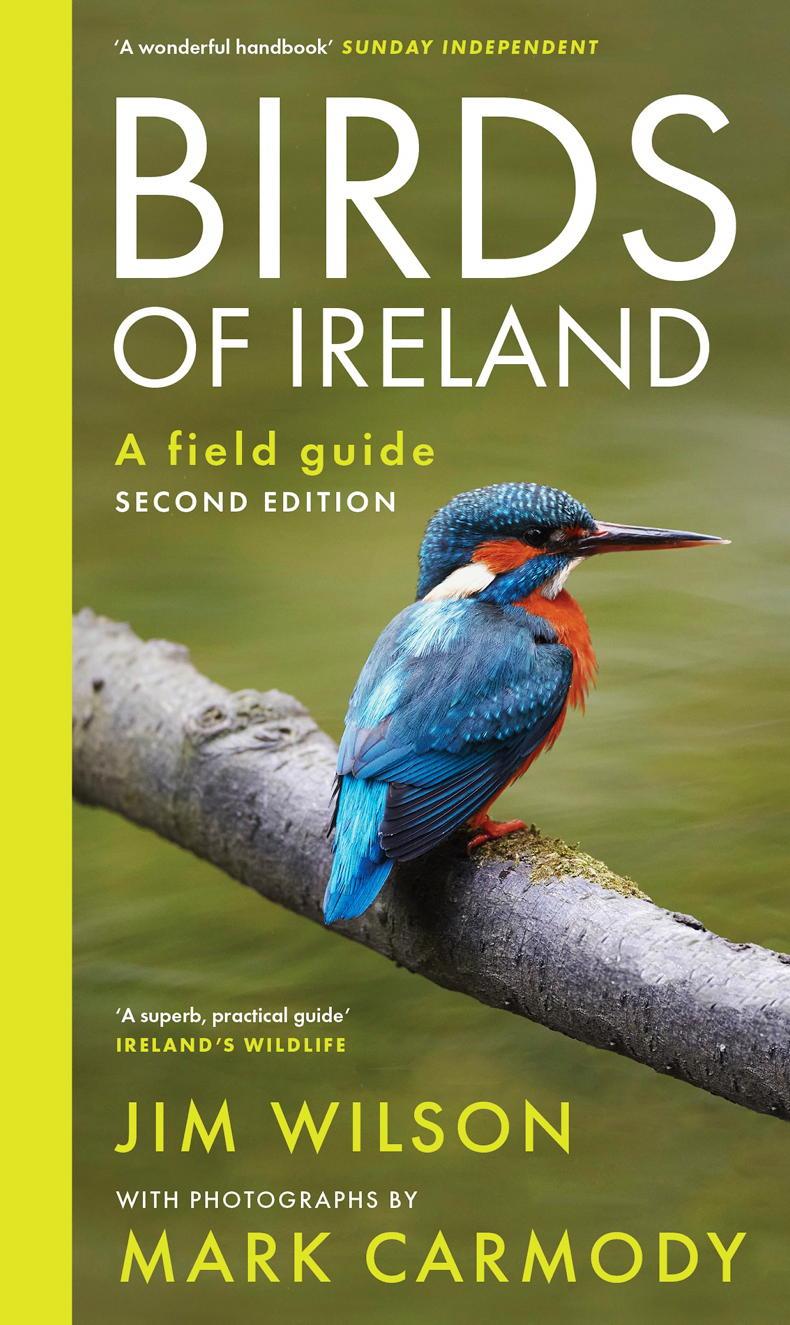
Birds of Ireland, A Field Guide (2nd edition) by Jim Wilson and photography by Mark Carmody. Published March 2024 by Gill Books
Read more
The Book Corner
How fast is your fashion?
Have you ever looked out the window and wondered if it’s a bluetit or greenfinch tweeting on the branch outside? Or what birds are paying your bird feeder a visit every day? A new book, Birds of Ireland: A Field Guide (2nd edition), is the handy pocketbook that you’ll want at your fingertips in order to answer these questions.
Written by Jim Wilson, with photography by Mark Carmody, this second edition of the guide is an up-to-date compendium of the bird population in Ireland. Carefully collated and captured over the past few years, the pair felt it was time to update their first guide as there have been significant changes in the 11 years since it was first published.

White-throated dipper.
Background and beginnings
Jim and Mark have been working together for a long time. In fact, they are uncle and newphew. Jim was the one who took Mark birdwatching when he was a child. “He’s the reason I started birdwatching,” Mark says. “I travelled all over Ireland birdwatching with him when I was a kid and he instilled my love for it at an early age.”
“It was very easy to work together on the book. I’ve always seen him as a mentor. When I started getting into wildlife photography, he was my first port of call, to ask him to critique my work and look for advice. He would always give me a good steer.”
Jim’s passion has been engrained from a young age also. Growing up near Cork Harbour, he would go birdwatching with friends from school. “As long as I can remember, I have had a fascination with wild animals and nature of all description,” says Jim.

Jim Wilson
“When I was a child, I used to get library books on the natural world, the ones with big pictures of wildlife from Africa and all that. I was struck by the wonder of the variety of life that we share the planet with. Then when I was about 11 years old, I went birdwatching with some friends of mine in school. This was the first kind of formalised activity that I undertook, which has led to a lifelong passion. My earliest birdwatching notebook, which I still have, is from when I was 12.”

Black Guillemot
Irish wildlife
A lot has happened in Ireland’s natural world in the years since Jim and Mark first published the guide. Things have changed in the landscape and there have been other factors that made the pair want to update the book.
“One of the big things in the past decade that has affected Ireland’s bird population is climate change,” says Jim. “It has caused quite a rapid influx of species from more southern parts of Europe. When we published the first book, these would have been very rare or not breeding at all. There’s a number of those species that are looking like they’re here to stay in fact. For example, the little egret, which is a beautiful, small white heron. I remember I saw my first one in 1976, near my home here in Cork Harbour. It was so rare. Now, they’re in almost every county in Ireland and they’re breeding here. There are also birds like the Goldfinch which have become so common in gardens. It’s unbelievable.”
“On the other hand, there are others like garden birds, and greenfinches for example, which used be very common, they have now become quite scarce. This is partly due to the spread of a respiratory disease that they get from a birdfeeder in somebody’s garden. So inadvertently, we were actually helping to spread a fatal disease. Their numbers have dropped dramatically. They’re just some of the changes I have seen.”
Creating memories
Birdwatching is a great hobby to undertake as you are not only getting out in nature, but it requires you to be present and in the moment. Turning your phone off, or on silent, observing the natural world around you, and hopefully, capturing some of Ireland’s incredible bird population can be very relaxing.

Mediterranean Gull
Jim and Mark have years of experience in this activity and both have wonderful memories of capturing all of the information and photography needed to compile their new book.
“Growing up in Cobh, the sea was always important to me, as well as estuaries and their role. Birdwatching as a child was waders and shorebirds, the curlew, for example,” says Mark. “I do love photographing waders, particularly the young waders. They might have been born in the high arctic of Canada, Scandinavia, or Iceland, and they come down to Ireland in the autumn while migrating south. You could be the first human they’ve ever laid eyes on. They’ve no idea what you are, so if you sit still and get as comfortable as you can, they’ll come right up to your feet. They’re really beautiful birds.”

Mark Carmody
For Jim, birdwatching never gets old and it is that simple act that still gives him the passion that was instilled in him as a child. “I’m always asked: ‘what’s your favourite bird?’ and, to be honest, there really isn’t just one. It is whatever bird is in front of me,” he says.
“If it’s a robin, then I’m blown away by the beauty, the structure, the character of the bird. And I do like wetland birds a lot because I grew up on the middle of a big wetland. Honestly, I don’t think there’s any bird I don’t like.”
Jim Wilson is a wildlife writer, broadcaster, tour leader, and former chairman of BirdWatch Ireland. He has been involved in the study and conservation of birds in Ireland for over 45 years, contributing to major surveys and international projects. Mark Carmody has a PhD in biochemistry and works as a European Patent Attorney; Mark is also an award-winning wildlife photographer and former editor of the Cork Bird Report. Together they have co-authored Shorebirds of Ireland (2009), Freshwater Birds of Ireland (2011) and, of course, the first edition of Birds of Ireland (2013).
Just in time for the spring migration back to Ireland and the popular national dawn chorus, the new edition contains details more than 260 species accompanied by over 1,600 photos. The key identification features of each bird are shown in detail. It also features concise descriptions and pointers that will help you identify birds in an easy, quick-reference format.

Birds of Ireland, A Field Guide (2nd edition) by Jim Wilson and photography by Mark Carmody. Published March 2024 by Gill Books
Read more
The Book Corner
How fast is your fashion?










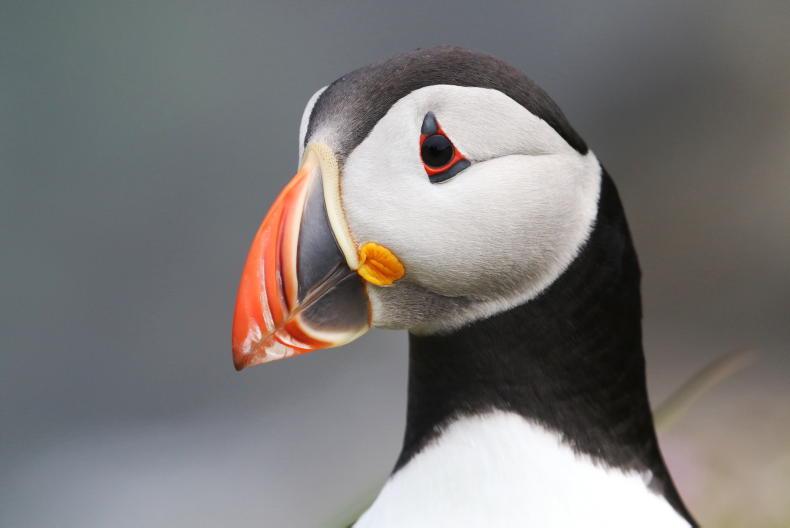
SHARING OPTIONS